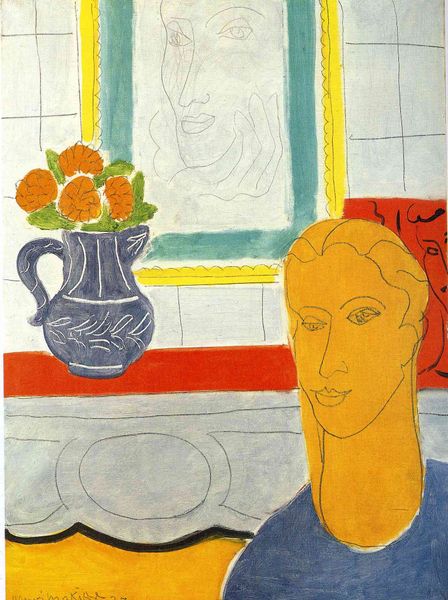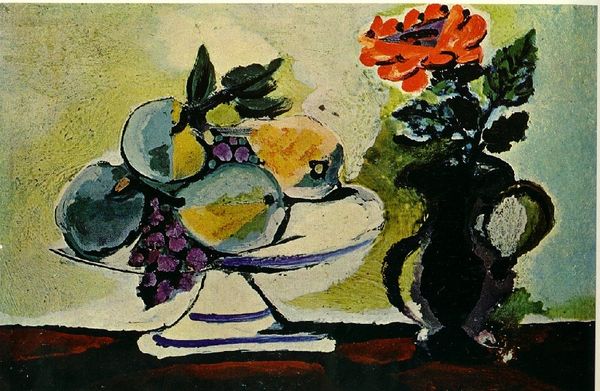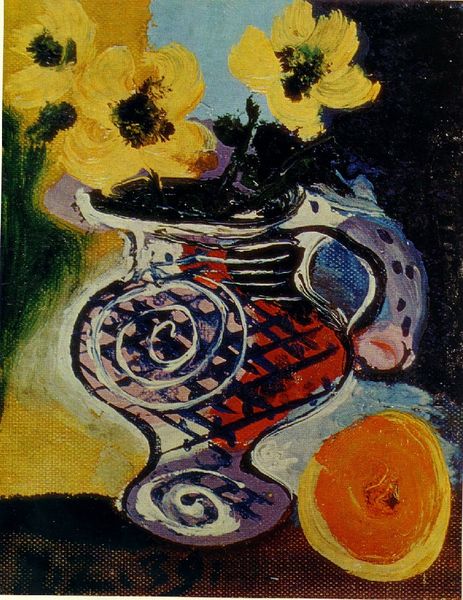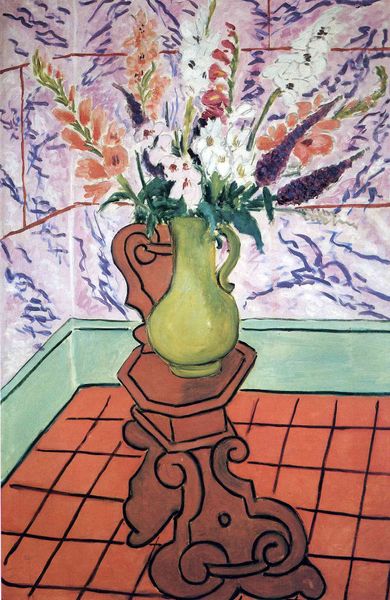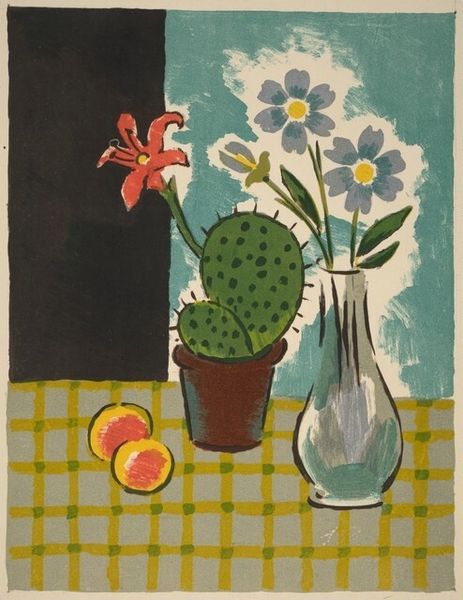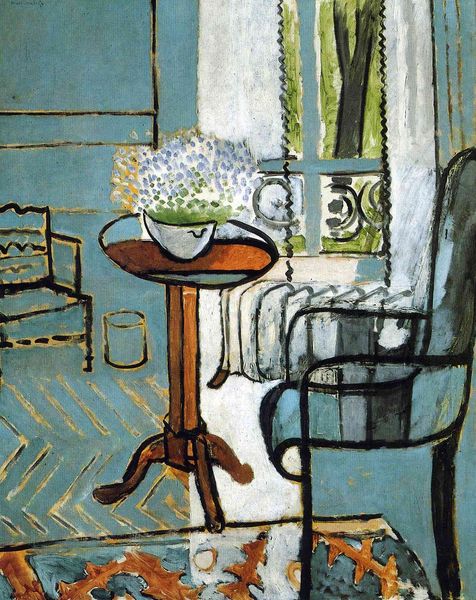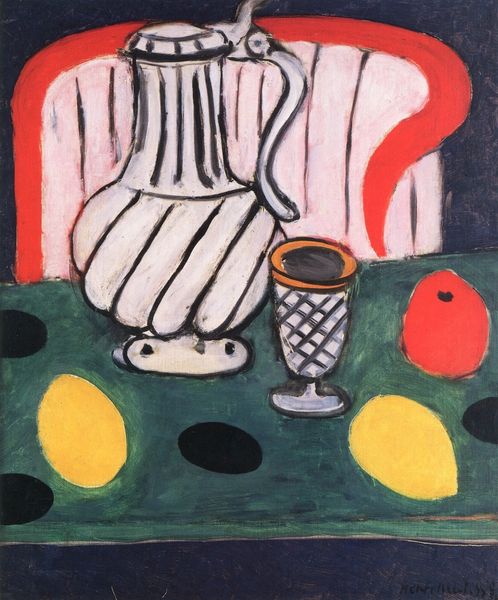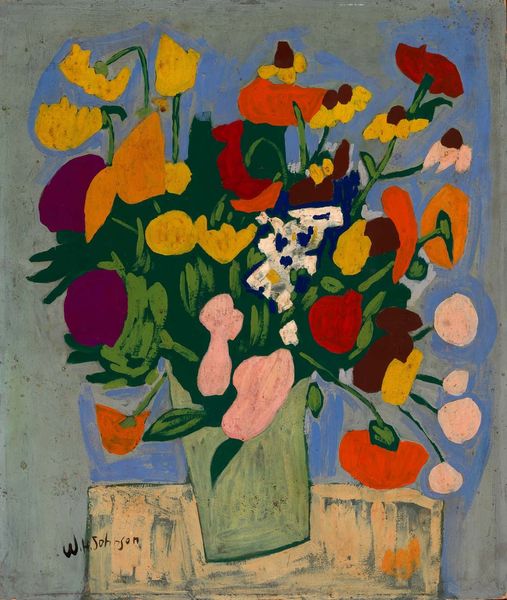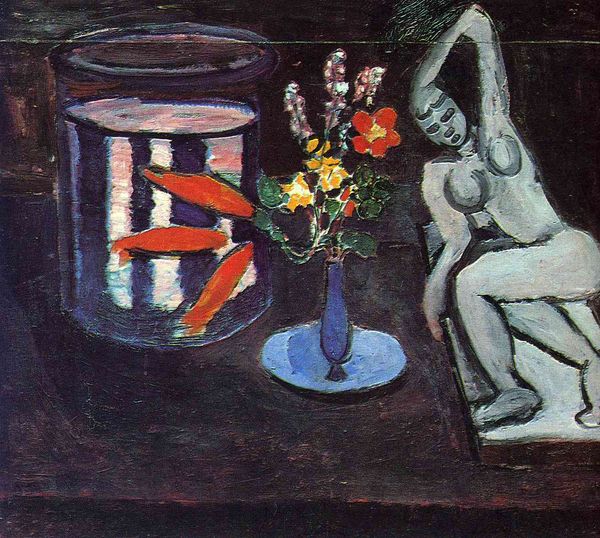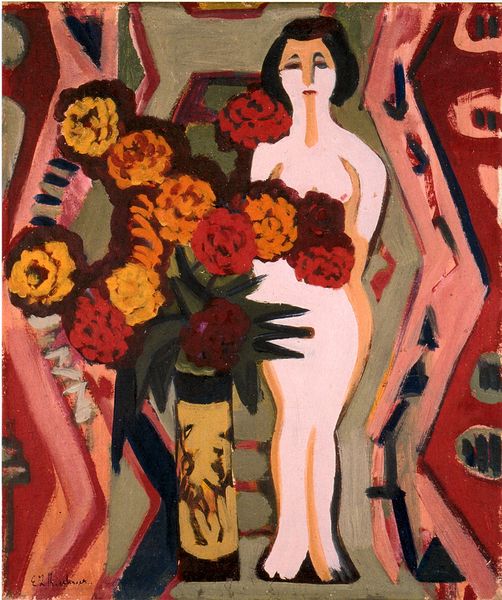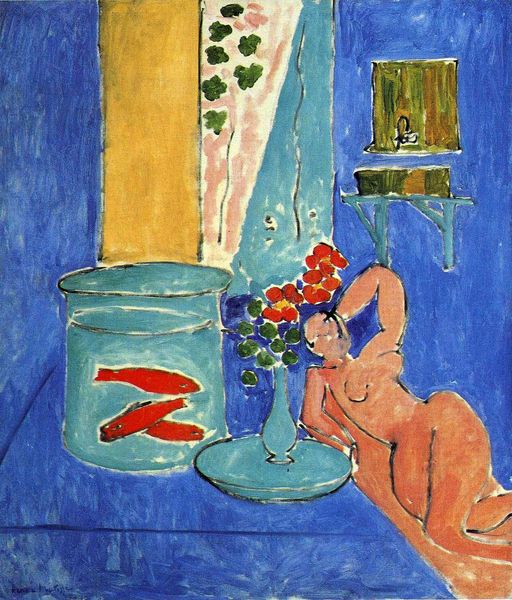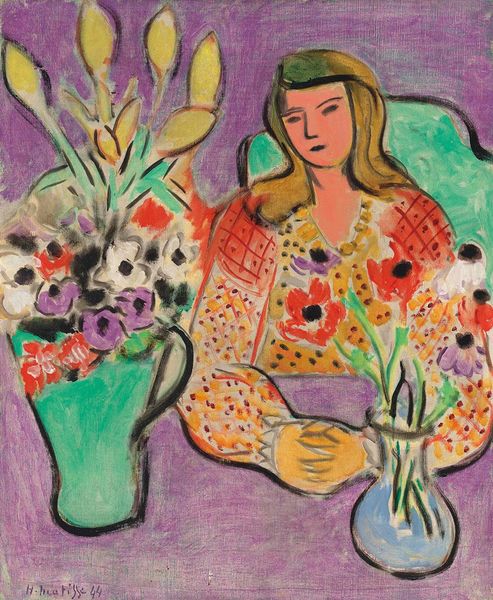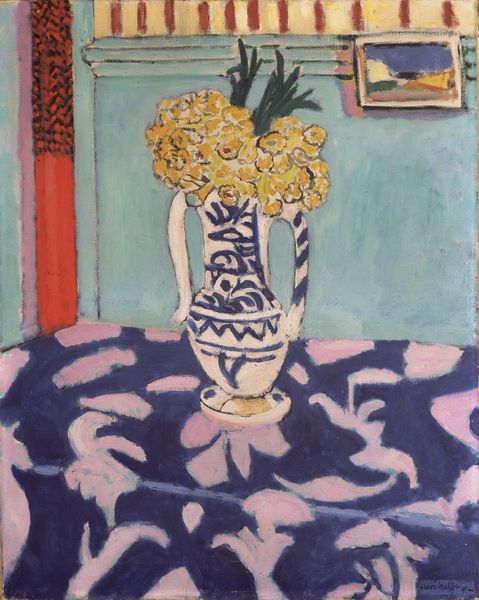
#
pop art-esque
#
popart
#
egg art
#
pop art
#
flower
#
vase
#
handmade artwork painting
#
fluid art
#
naive art
#
pop art-influence
#
chaotic composition
#
cartoon theme
Dimensions: 98 x 78.8 cm
Copyright: Henri Matisse,Fair Use
Curator: So, here we have Henri Matisse’s “The Daisies,” painted in 1939. It’s currently housed right here at the Art Institute of Chicago. Editor: Immediately, what strikes me is this almost chaotic sense of intimacy. Like peeking into someone's studio and seeing all these different perspectives coexisting in one space. Curator: That chaos, I think, is very deliberate. Consider the socio-political climate of 1939. The looming threat of World War II cast a shadow. Matisse, though largely apolitical, lived in France, facing increasing uncertainty and anxiety, themes which critics see echoed in the somewhat disjointed nature of the painting. Editor: Disjointed, yes, but there's still joy there, too. The bright reds of the seated figure, the pop of yellow lemons, the lively daisies themselves... It feels like an act of defiance, celebrating the beauty of everyday life even as darkness gathers. Like humming a happy tune when you're scared of the dark. Curator: Precisely. We might consider the way Matisse is deliberately challenging conventions of representation. Each element--the figure, the vase, the flowers, even the lemons arranged on the table--are treated as independent visual statements, which also speaks to an era in which existing artistic and societal norms are undergoing great change. Editor: I wonder if the flatness of the image does that, too? There's not much depth, so each object seems to assert itself equally on the picture plane, refusing to recede. It's bold, almost declarative. Curator: You've nailed it! The simplification of form allows Matisse to emphasize the emotive power of color and shape. This places emphasis on the painting's surface and challenges traditional notions of depth, and perspective and hierarchy that dominated Western painting for centuries. Editor: You know, looking at it now, it feels less chaotic and more like a layered story. A story that you don't quite grasp on a first glance but can appreciate with a longer, attentive view. I feel it's not just what you see, but the mood it evokes as it blends with who you are. Curator: Absolutely. It prompts us to ask questions about art and its relation to the society around it and ourselves in our current contexts. A constant invitation for fresh reflections, which makes the painting enduringly relevant.
Comments
No comments
Be the first to comment and join the conversation on the ultimate creative platform.
